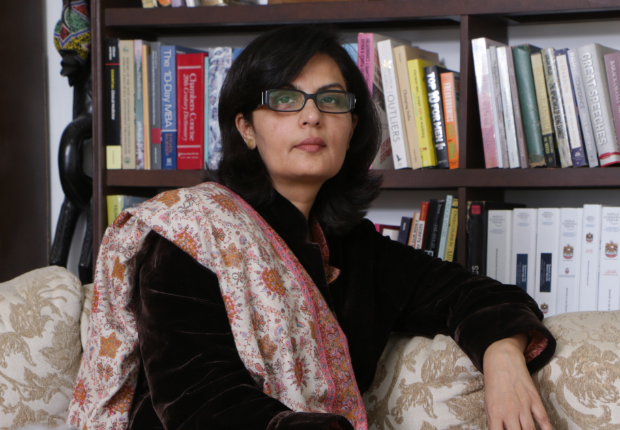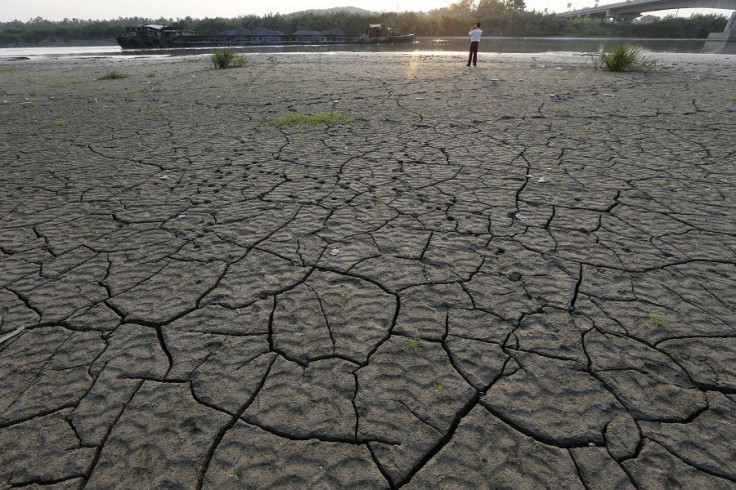Who is Sania Nishtar, Pakistan's candidate to lead the World Health Organisation?
Nishtar has an important civil society background which she hopes will help her build partnerships as WHO's Director General

Sania Nishtar is the candidate of Pakistan to become the next director general of the World Health Organisation.
A cardiologist trained to work in complex healthcare settings, the only female candidate in the race also has extensive experience working in civil society institutions. She is the founder of the NGO think tank Heartfile – described as a health policy voice and catalyst for health reform in Pakistan.
She has also served as federal minister in the 2013 Pakistan Caretaker Government
She shares some of her ideas about how WHO can be reformed with IBTimes UK.
The Ebola epidemic has drawn unprecedented attention to the WHO and its deficiencies. Do you think the criticisms were justified?
I think there are two sides to this question, first, did WHO respond appropriately to the Ebola outbreak, given its resources and capacity? And second, were the world's expectations of WHO appropriate, given its mandate, resources and capacities - and if not, how could the expectations and capacities be aligned?
With regard to whether or not WHO responded appropriately, I would like to focus on the lessons learnt and move on from there—and there were indeed many lessons learned.
First, internal coordination and information sharing with affected governments could have been more effective.
Second, the humanitarian emergency should have been declared earlier – which would have brought in earlier engagement of the UN humanitarian response mechanism. It is important that as part of WHO's new Health Emergencies Programme, these modalities are streamlined.
Third, WHO had maintained limited capacity for outbreak response in this disease area, given previous budget cuts. It is now amply clear that this needs to be remedied. And finally, there was an incomplete understanding of the key roles of the local communities in Ebola control and containment, and the importance of understanding local culture and practices, and hence the importance of appropriate communication.

It's clear that the world's expectations did not match WHO's capacity and resources. WHO is primarily an organisation that sets norms and standards, speaks to matters of global, nationals and local public health, and provides technical advice to governments on matters of public health and health related issues. It has not been an organisation that deploys a "white helmet" army to respond to major health emergencies.
It is clear, however, that the world wants a WHO that can mobilise partners and provide strategic direction where needed to the response to outbreaks and emergencies with health consequences. To this end, the World Health Assembly, comprising the member states of WHO, agreed on the course for reform of WHO's emergency capacity in May of 2016. Implementation of those reforms is ongoing and will be a priority for the organisation moving forward under my leadership.
As you've mentioned, WHO's resources are limited. How do you plan to ensure WHO has sufficient, sustainable funding in the future?
We need to rethink WHO's financing model. As reliance on voluntary contribution increases, WHO erodes it capacity to fulfill its own agenda. As the world's only multilateral agency in health with exclusive mandates, WHO has a critical role. Its strategic plans relevant to its core mandates must be adequately funded.
I have focused on four compacts to address the funding issue. The first is "financing consensus compact" to address the current imbalance between assessed and voluntary contributions, which is currently skewed towards the latter. Over the last decade, we have seen increases in WHO budgets, but not assessed contributions. Assessed contributions reflect confidence in the multilateral character of WHO. An increase will enable more strategic and predictable use of resources and better investments for capacity building to respond to emergencies.
I also propose a "value for money compact". WHO must institutionalise the culture and systems to ''buy results'' of the desired quality at the lowest price. Next I propose a "solidarity financing framework" for exampleproviding organisations with details on ways to charge and channel voluntary micro-levies to support WHO's assessed contributions.
And finally, an "emergencies financing compact". The idea is to consolidate funding instruments and mobilise full financing for the Contingency Fund for Emergencies.
Non-communicable diseases (NDCs) are the biggest killers worldwide. Is there anything that WHO can improve to tackle this problem?
Given the sheer size of the burden, the prevention and control of NCDs must therefore lie at the core of WHO's work.
I see three key roles for WHO: coordination, norm-setting and innovation, and implementation. When it comes to coordination, WHO has been designated the lead agency among UN agencies. Under my leadership, WHO will enhance its coordination of the actions of all UN agencies in this field, at global, regional, and country levels.

When it comes to norm-setting and innovation, WHO has developed the ''best buys'' for the prevention and control of NCDs. This work is not an end in itself. It must be updated, refined, new solutions discovered, new technologies applied.
The NCD epidemic will only be overcome if each government and each global citizen does their part. WHO has a central role in all of these activities, as advocate, catalyst, partner, and leader.
Should WHO be concerned about climate change and what role would the organisation take under your leadership to tackle climate change?
From global news headlines about the rising threat of dengue, which is now endemic in 128 countries and threatening four billion people, to recent United Nations Environmental Programme publication, that outlined a range of environmental threats to health, and how addressing environmental challenges can also protect and promote health, the scale of the problem is quite clear.
Policies to increase resilience of populations to climate change, such as by enhancing food security and access to safe water yield benefits to health. Many health issues are directly linked to climate change, such as shifts in the distribution of tropical diseases and disease outbreaks.
Over two years, 2014-15, I served on the Planetary Health Commission and contributed to a report, which highlighted existing evidence to show how the health and well-being of future generations is being jeopardized by the unprecedented degradation of the planet's natural systems.

Droughts, floods, other extreme climate events (hurricanes, typhoons), and changes in disease vector distribution can also wreak havoc in many other countries. WHO must facilitate access of vulnerable countries to the climate mitigation and adaptation funds.
How likely is it that countries will reach the sustainable goal of universal health coverage?
Universal Health Coverage (UHC) is the central pillar in the health SDGs, promoting healthy life expectancy, reducing poverty, and protecting household incomes. Under my leadership, WHO will promote UHC as a health policy goal for all countries, and will help ministries of health galvanise commitment at every level of government.
Achieving sustainable and equitable UHC will rely on taking a data-driven approach tailored to different member states. Member states must develop appropriate institutional arrangements to collect, consolidate, analyse, interpret, and communicate health information for timely actions at appropriate levels.
I also believe that the success of UHC hinges on effective health systems. This will involve tailoring country-specific approaches to combat corruption, promoting collaboration between public and private sectors, developing innovative strategies for health and human resources, and setting priorities that integrate a strong health prevention and promotion approach – to combat both infectious and non-communicable diseases as well as to manage the population health needs of changing and ageing populations.
Read more: How we can reform WHO
© Copyright IBTimes 2025. All rights reserved.






















